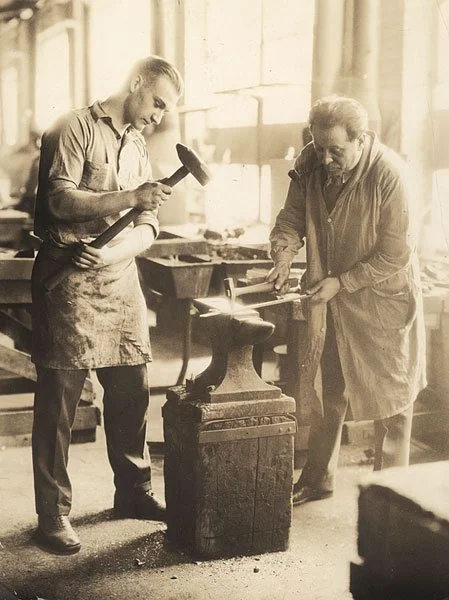The New Arts and Crafts Movement - It’s no longer just for the elite.
Forged Bronze Craftsman Style Pull by Clay and Steel
At the height of industrial manufacturing, when people like Ford revolutionized the assembly line and forever changed the way we build things, a new art movement arose. It’s origins began in 1851 by the organizers of the Great Exhibition at The Crystal Palace in London. The organizers of the event were dissatisfied with many of the manufactured items there. They found them too ornate while also lacking in craftsmanship. Art historian Nikolaus Pevsner called it a “vulgarity of detail”. While organizer Owen Jones Jones declared that ornament "must be secondary to the thing decorated".
Later, the pioneers of the Arts and Crafts Movement John Ruskin and William Morris expanded upon those beliefs. He was critical of industrial manufacturing, declaring that the process used “serville labour”. He believed that the mental health and morality of society depended upon craftsman creating work that they designed. He believed that handwork and craftsmanship merged dignity with labor. (Personally, I think this concept is underrated and that hand labor remains undervalued.)
William Morris designed and was personally involved in the manufacturing of his well known furniture. He wanted his workers to be masters of their craft and said that “without dignified, creative human occupation people became disconnected from life".
Philosophically the movement was opposed to industry. It valued a utilitarian aesthetic with the belief that decoration should be a reflection of an objects functionality. It was a social movement. It believed that the mental health of the individual and the well being of our society would benefit from a more thoughtful mode of production.
The Arts and Crafts movement would go on to influence design for decades to come. With artists like Samuel Yellin and designers and architects, such as Frank Lloyd Wright, embracing it’s values.
But ultimately the movement did not live up to all it’s philosophical aims. At the time labor was inexpensive and the artists making the objects could never afford their own work. The slow labor could not keep up with the efficiency of mass manufacturing and as a result only the elite could afford their work.
Samuel Yellin in his workshop
The new arts and crafts movement faces many of the same challenges.
Enter Etsy. The tech giant boasts around 3.2 billion a year in sales. Some artists manage to make a full living on the site. But with almost 30 million competitors the fierce competition drives down prices and is often simply a race to the bottom.
Still there are some small and savvy manufacturers who manage to make it work for them. For buyers, if you can discern between the hand crafted goods and the items being mass manufactured on Alibaba, you can find nearly anything imaginable at a reasonable price. Etsy has brought a broad awareness to the maker market.
Since then places like Shopify, Charish and my personal new favorite, Wescover, have allowed small manufacturers to find a niche for their products. Locally farmers markets and small galleries like Abrams Claghorn Gallery in Albany, CA, give artists a space where they can sell their story and show their artisanal wares in person.
The price point of all these places varies considerably. However there are plenty of wares that nearly anyone with a decent stable job can afford.
In my experience, the artist can afford to make work for themselves. We also tend to barter with other artists, making it more accessible than the original Arts and Crafts movement.
The modern makers movement is the solution to the increasing homogenization of design. The many artists competing creates constant innovation in design and procedure. This artisan movement does have it’s issues. I, myself, have been very open about the difficulties of producing quality work in the expensive San Francisco Bay Area. I do believe the current market is full of unperilled craftsmanship and incredible diversity. I think it fulfills it’s social aspirations better than the original movement.
Clay and Steel Bronze Towel Ring




